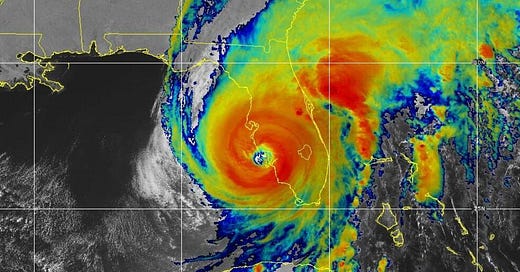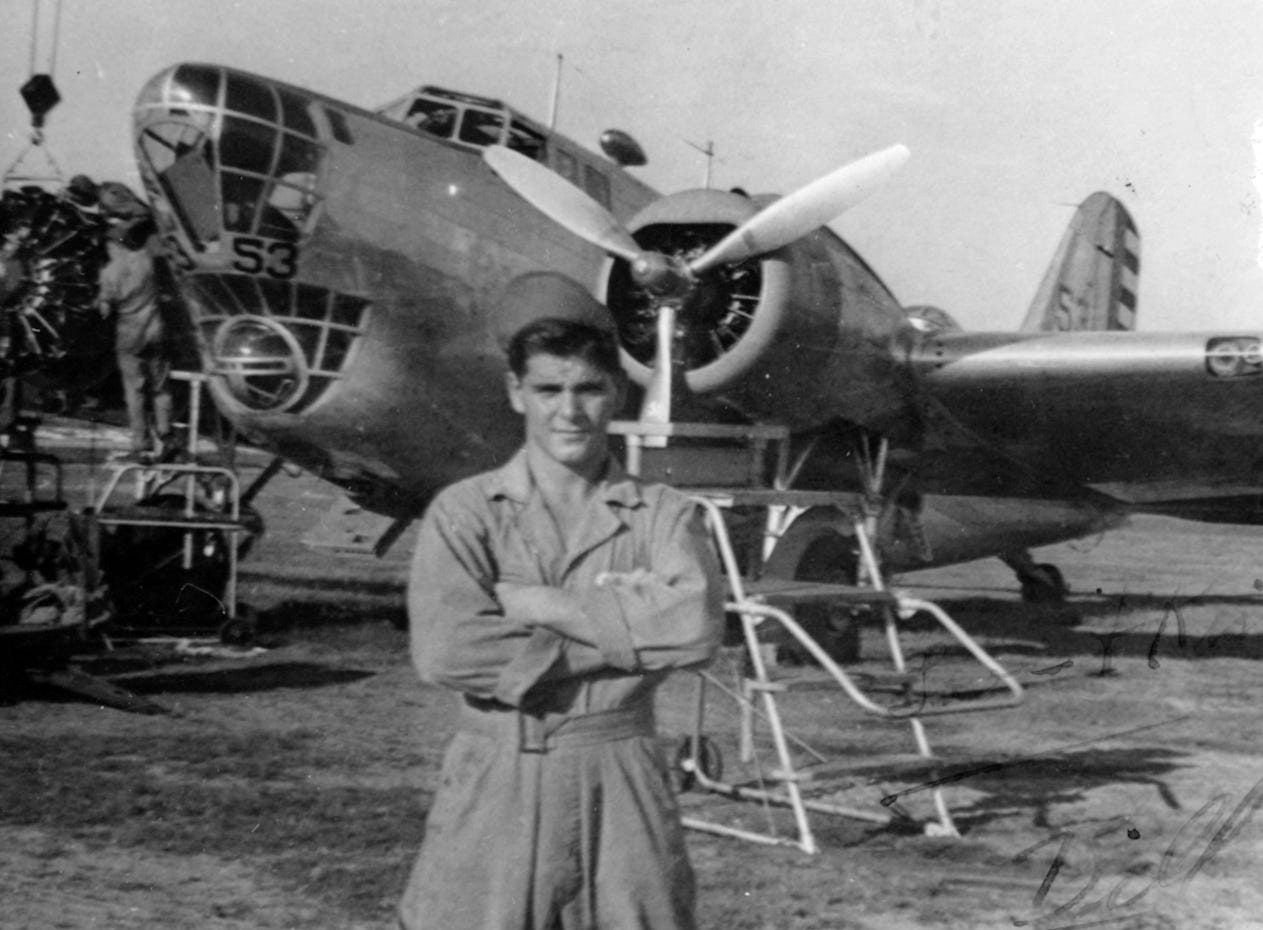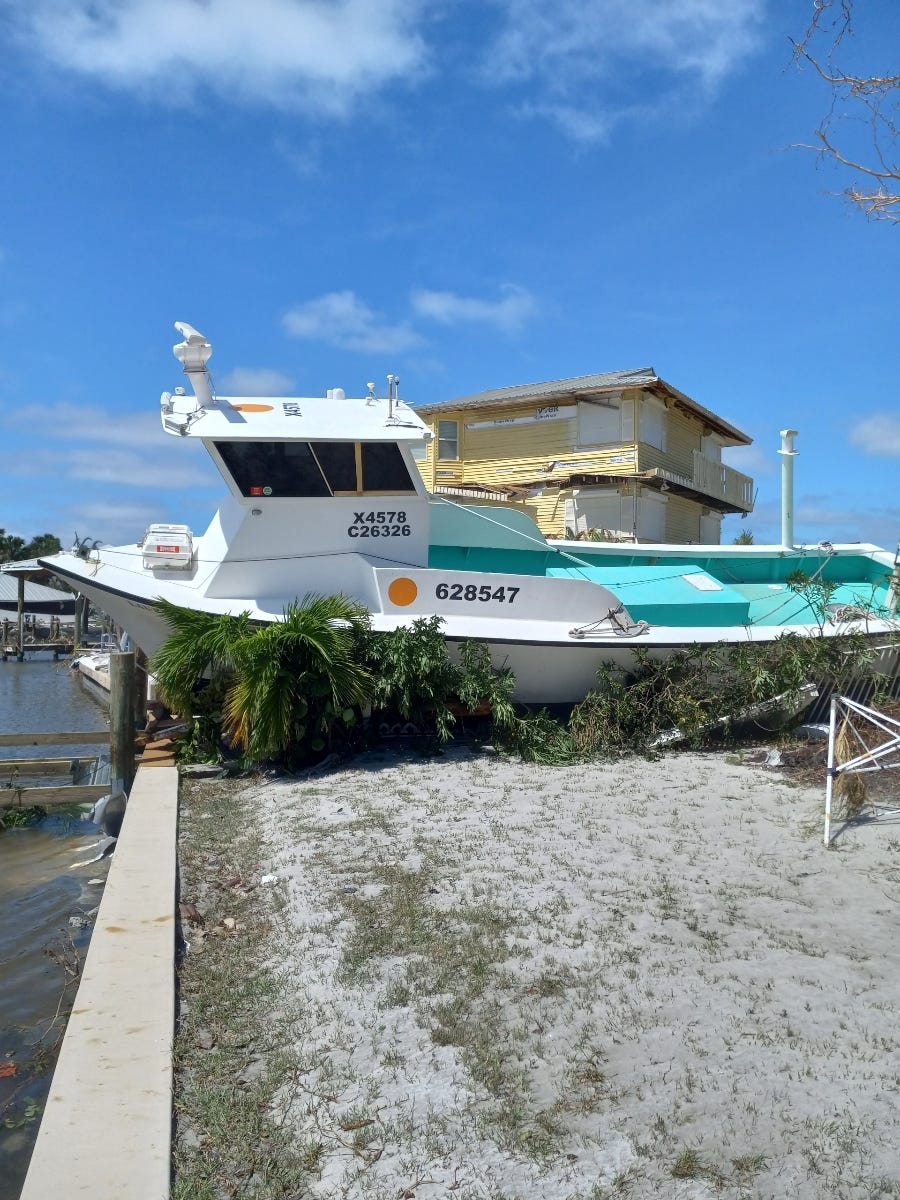“Heartbreaking” doesn’t describe the situation in southwest Florida now and for the foreseeable future. We’ve spent days watching the awfulness left behind as Ian smashed the “City of Palms,” and nearby Sanibel Island, Fort Myers Beach, and Cape Coral. It’s a Climate Change reality check for one of the nation’s fastest growing metros. And, the human toll is awful.
Deaths in Lee County reached 42 late Sunday with rescue/recovery crews still at work and water still rising in area rivers. Drinking water remained scarce, as are power and internet service. The region’s fun and funky oceanfront “Times Square” is a pile of debris. All are a reminder that in the game of chance Florida plays with Mother Nature, she always holds the winning hand.
A Sacred Place
While so many in Florida continue to suffer, the situation in Fort Myers hits our family deeply. For us, it’s a sacred place. Here, my uncle disappeared while on a training flight in a B-26 bomber in 1942. SSGT Bill Kittiko and five others died when their plane went down near Sanibel Island. Bodies of the pilot and co-pilot were recovered. The bomber, my uncle and four others were lost to tides and time. Across generations, our family couldn’t escape the grief of his loss. It all changed in 2008 when some treasure hunters who were diving for the legendary “Batista’s Gold” identified the B-26 wreckage on the floor of the Gulf. They solved the mystery that haunted our family for over 60 years. Because of them, we knew where Billy Kittiko rested.
Those treasure hunters – most from Fort Myers – became close family friends. So, when Ian slammed their coastal communities, we held our collective breaths. One of our heroes gave up everything to the storm, his home leveled. Another, lost years of work and thousands of dollars he’d spent restoring a fishing boat. A third was spared by the whims of the floods. His crab boat was deposited away from its dock, the waters somehow keeping the ship and his business intact. Post storm, all are committed to staying and rebuilding, a theme Florida Governor Ron DeSantis began pushing even before Ian jumped to a Cat 4.
All but two of our Fort Myers friends are Florida transplants, and all have lived there for decades. Fort Myers and Florida are home. There isn’t anywhere else to go. I want them to get their lives and livelihoods back, though I don’t know if their expectations and my hope for their good fortune are remotely realistic.
Florida has spent the last few years barely managing floods from everyday thunderstorms. Insurance companies want no part of a state in a group labeled most threatened by Climate Change. Long term livability is questionable. In this age of Ian and other mega storms, is rebuilding in a swamp rational?
ASK THE QUESTION
I don’t have the answer. But it’s a question that needs to be asked and not only in Florida. Wildfires now regularly burn through communities in the Intermountain West, California, and the Pacific Northwest. To call what Utah, Arizona, and Nevada are experiencing a “drought” suggests it’s temporary, even though we’re 22 years in. Yet the people keep coming and building homes in the woods or on golf courses in a desert.
Like Florida, Arizona remains in full denial that nature is calling the shots. It continues to build massive water parks, surf parks, and resorts with no comprehensive plan to conserve water. Call it “hydro amnesia” but state leaders haven’t felt the need to explain where they’ll find drinking water for the long term. Like Florida, Arizona is MAGA Republican and has no use for anything coming from Washington. Unless, that is, it’s billions of those taxes they hate earmarked to rebuild in an Orlando swamp or construct desalination plants on the Cali coast.
There’s a disconnect here. We need to ask DeSantis and Governor Doug Ducey the question. Where should people live in the midst of extreme tropical events, mega wildfires, and mega drought. The question is as real as the millions migrating away from extreme weather worldwide. Ask the question. Demand answers. We may not like The Truth, but Mother Nature doesn’t care. Ask Fort Myers.
TV Hurricane Reporting Needs A Complete Overhaul
Full disclosure before I go any further. As a News Director, I’ve sent dozens of reporters and photojournalists “storm chasing.” They step into hurricanes, tropical storms, dust storms, monsoons, and get closer than anyone should to wildfires and tornadoes. My broadcast colleagues and I did this because these stunts produced amazing video. We made stupid decisions. I was irresponsible for putting our team into dangerous situations. Fortunately, no one was injured.
When Ian was coming ashore I spent more than a few hours watching CNN, Weather Channel, and other network reporters and meteorologists deliberately getting slammed by high winds. I learned from a news alert that Weather Channel’s Jim Cantore, a longtime hurricane surfer, was hit by a tree branch while doing one of his famous (infamous) live reports from inside the storm. Cantore wasn’t hurt. He’s very lucky.
It's past time to end this practice.
There isn’t anything to be learned from broadcasting live inside a Cat 4 Hurricane except that you’re flirting with injury or death. Yes, for Cantore and many reporters, the storm chase is a blast, an adrenaline-filled 15 minutes of fame. For the communities we’re serving, it’s gratuitous and provides almost zero useful information. And, someone is going to get killed out there.
How about next time we cover a mega nature event, we do this:
Embed reporters with emergency managers, flood control districts, hospital systems, and inside mission control of utility companies. Critical life decisions are made there.
Embed reporters within communities who’ve decided to “ride it out.” Shouldn’t be hard to find.
Bring in real time commentary from climate experts and meteorologists. Geek out on the science.
Keep a fresh group of reporters and producers in reserve, ready to do real time field reporting AFTER the storm. Seeing what the storm did and how the recovery progresses is the biggest story.
None of this is glamorous. Most isn’t very visual. But when these events happen – INFORMATION NOT PERFORMANCE – is where we’re most needed.








